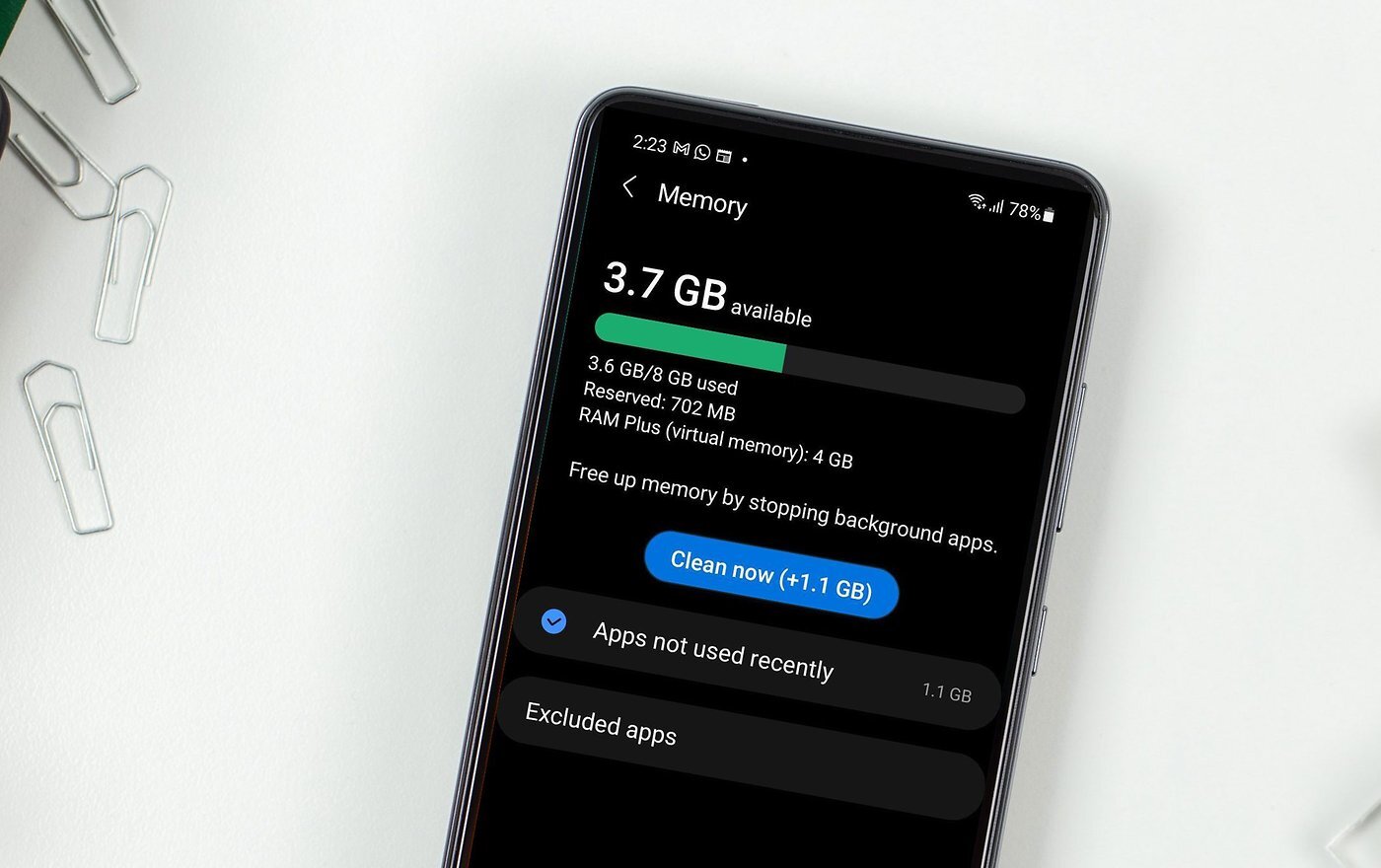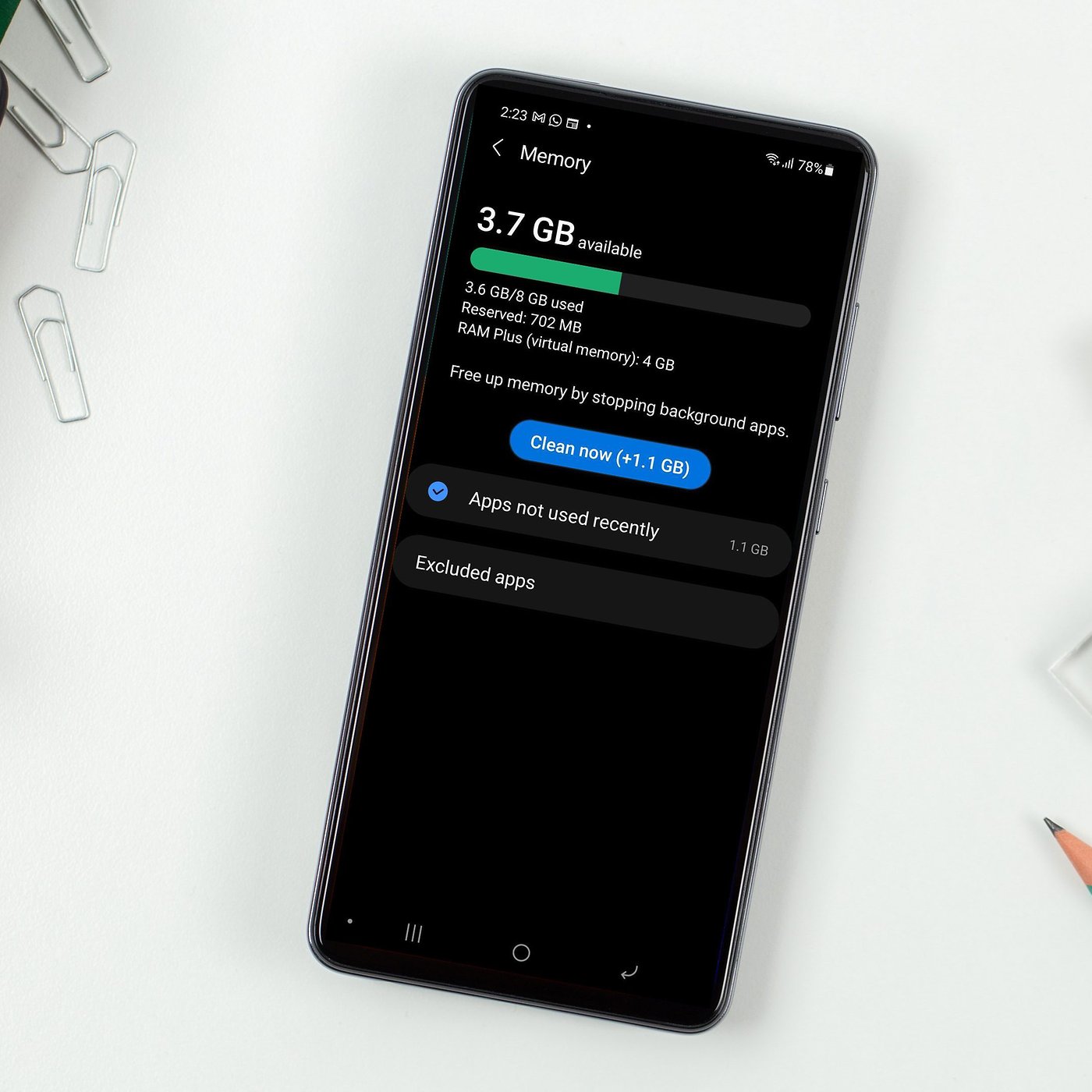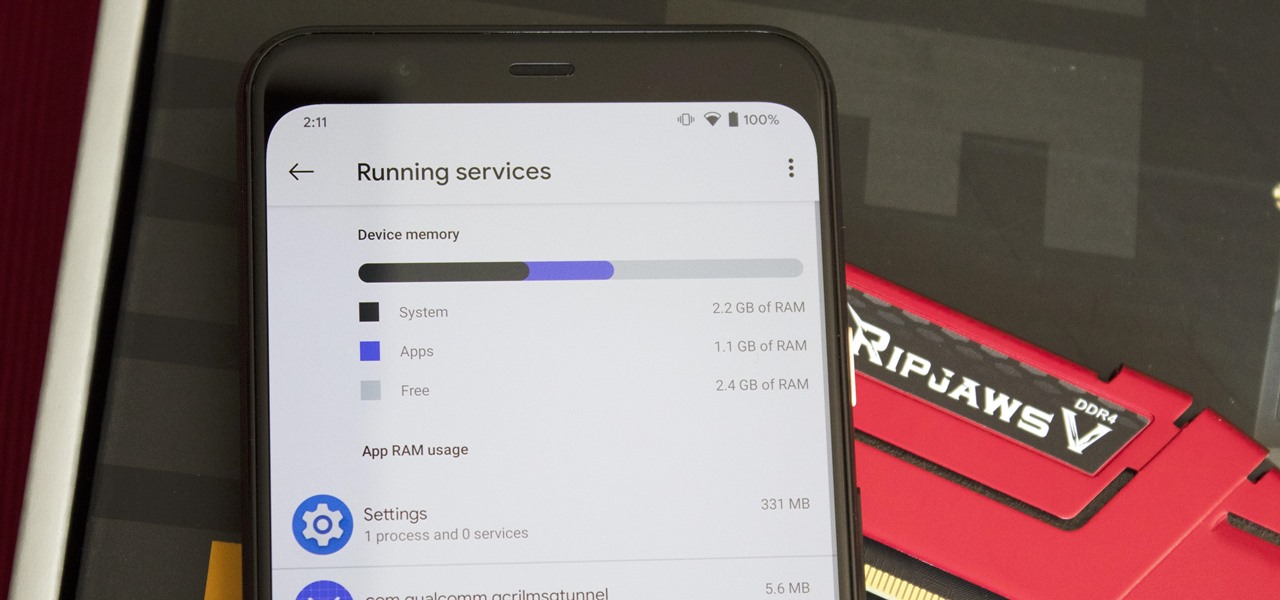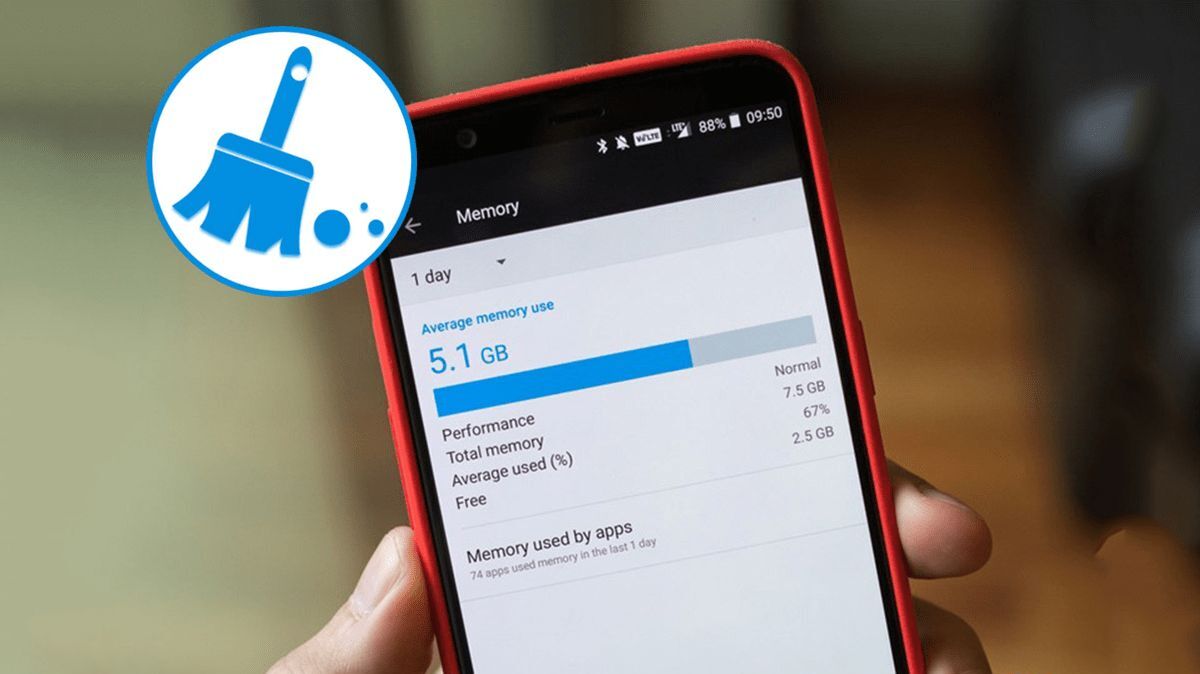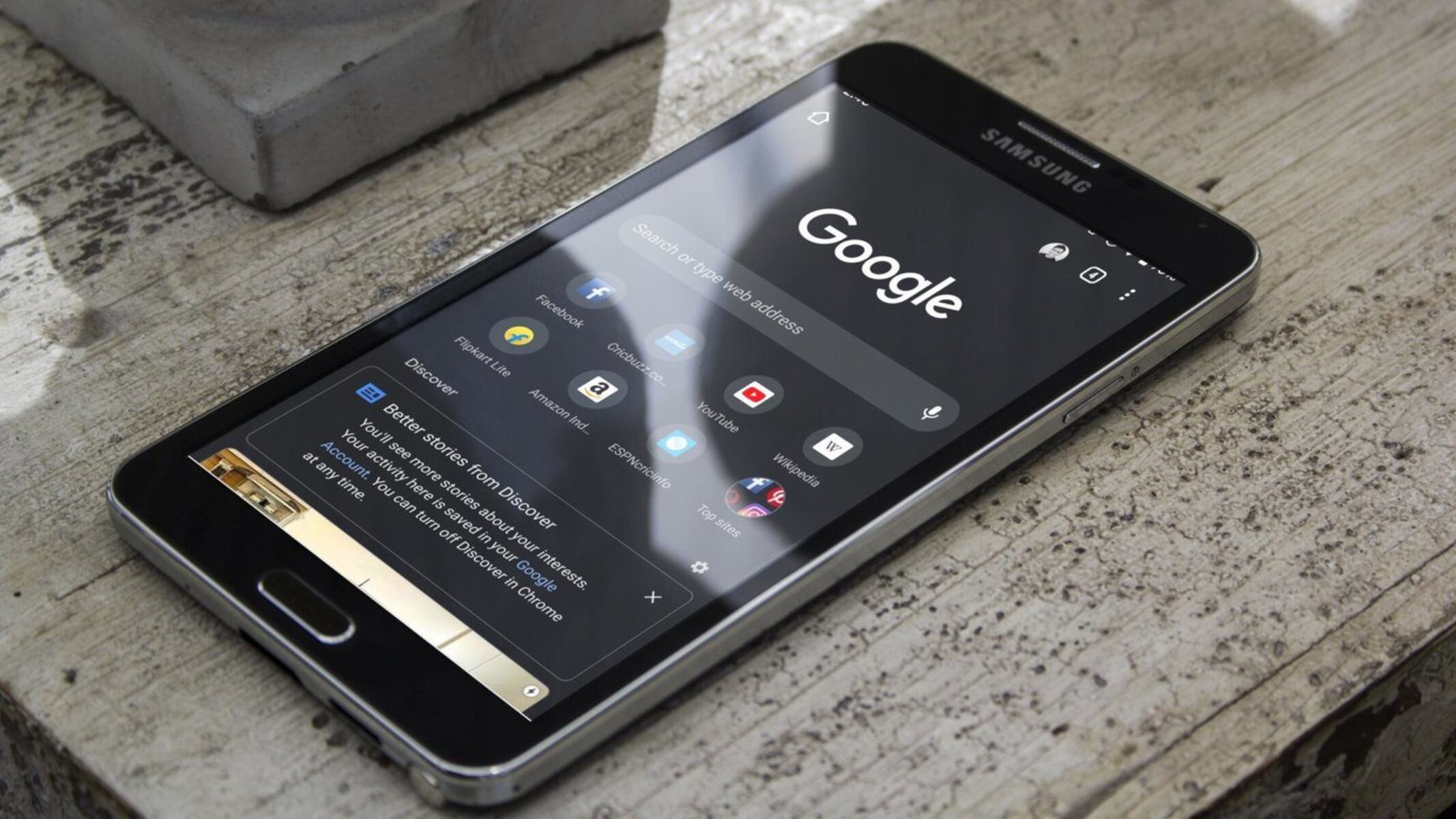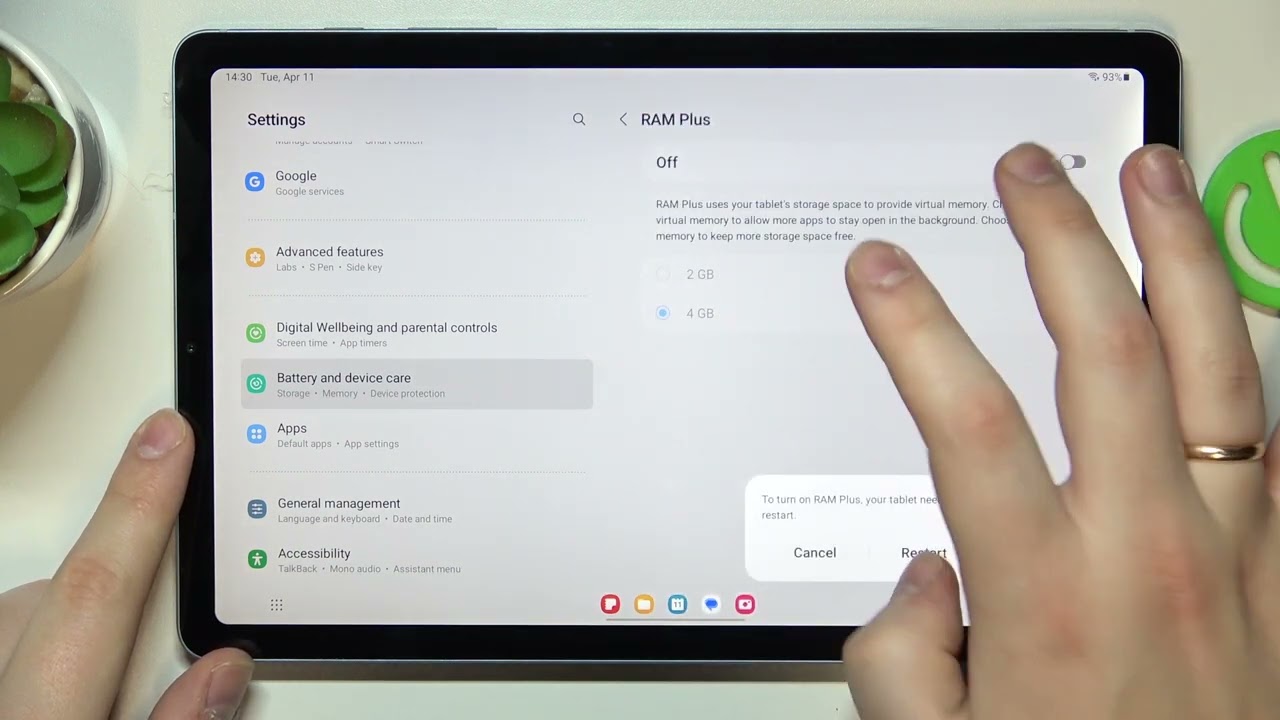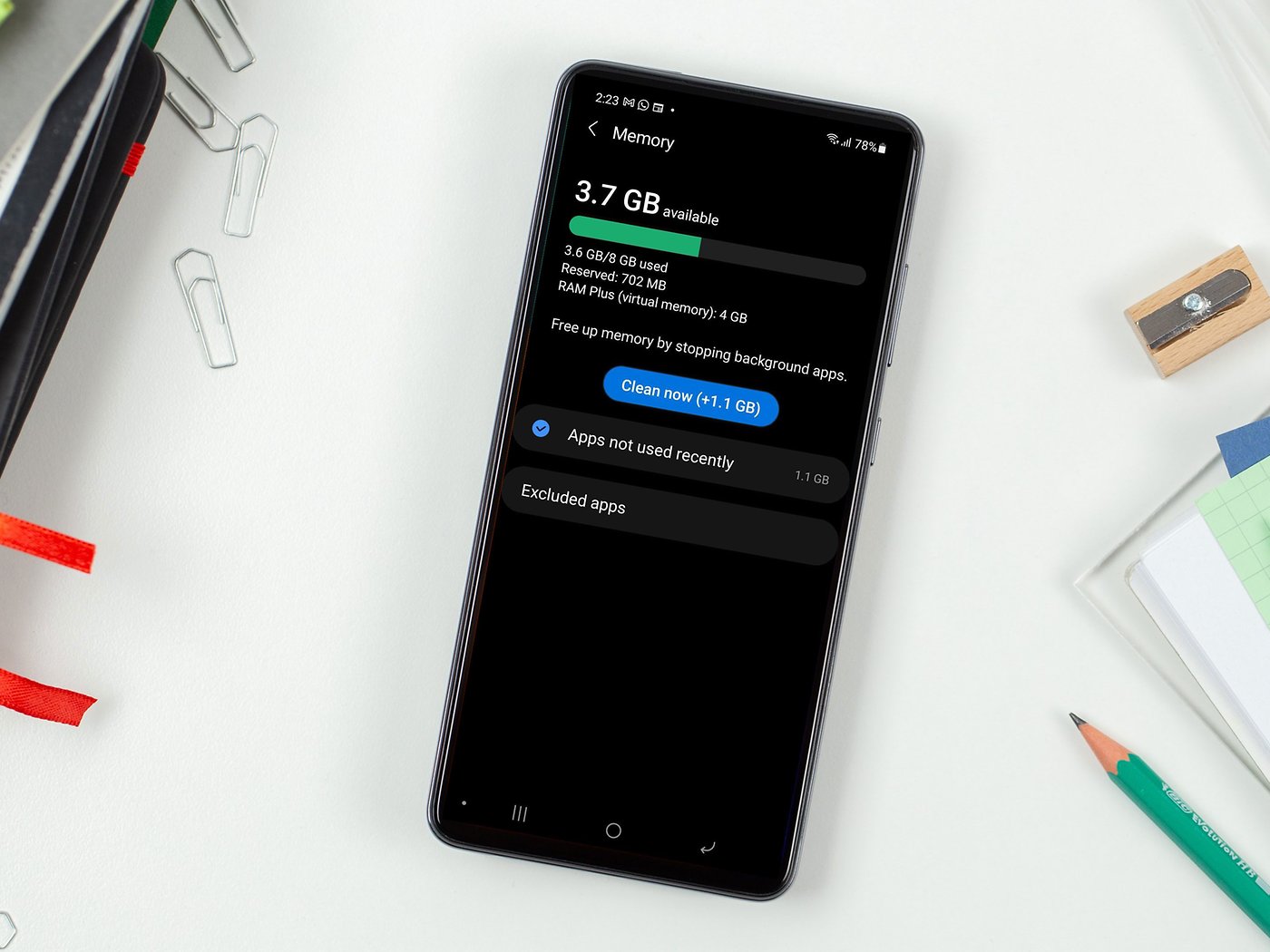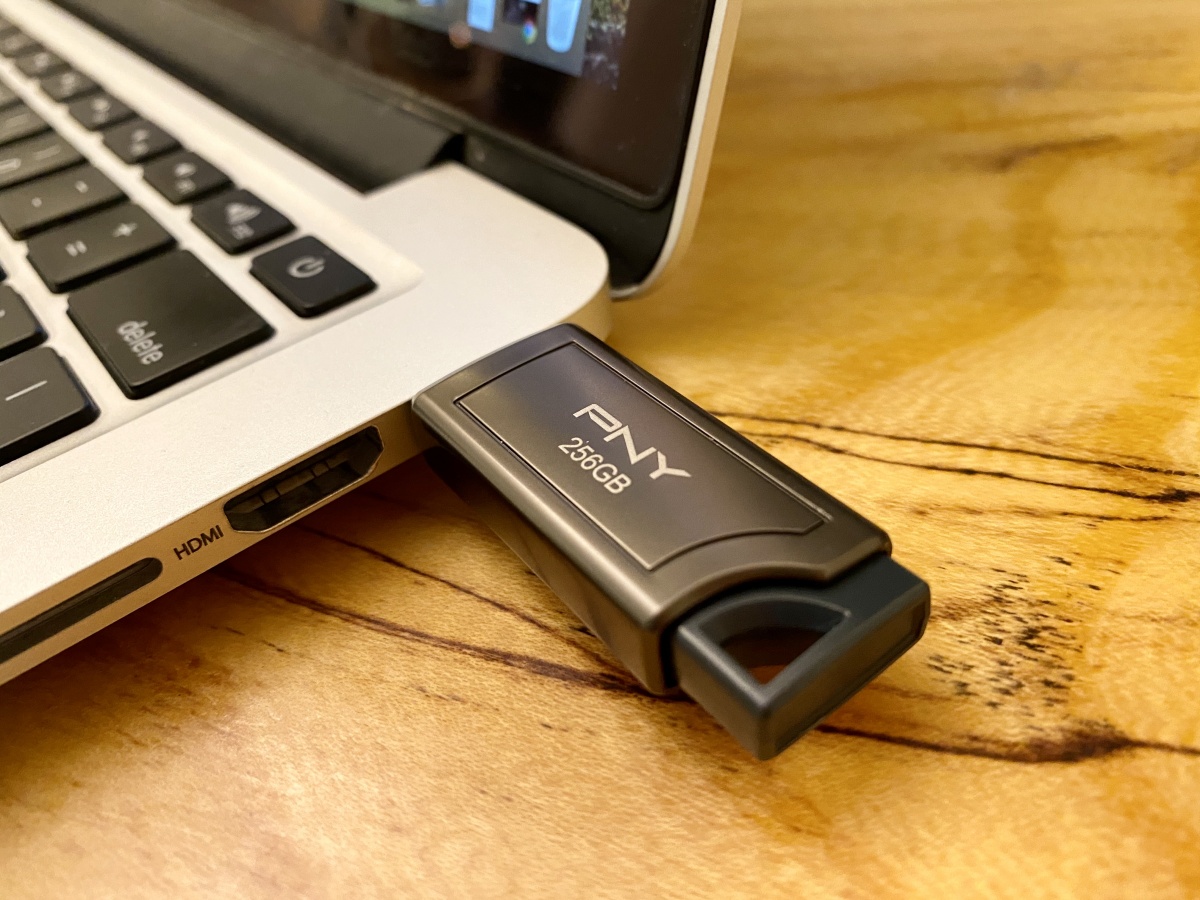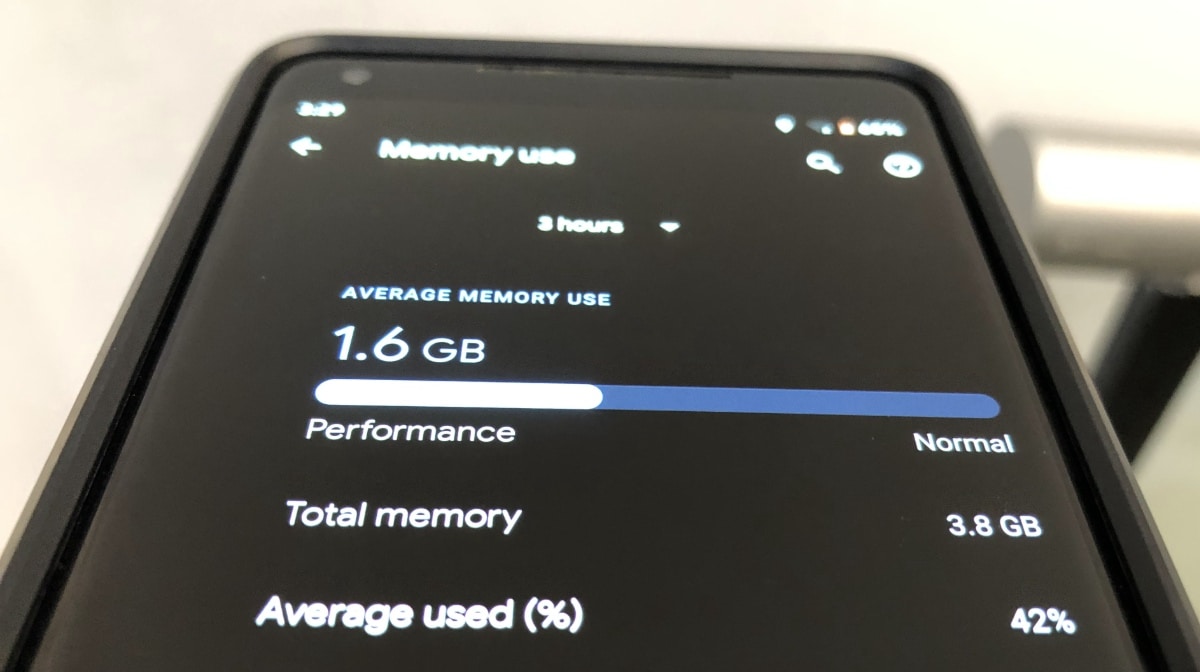Introduction
Is your Android device running out of memory? If you’re constantly encountering storage space issues, it may be time to free up some room on your device. Having ample memory is crucial for optimal performance and to make space for new apps, photos, and videos. In this article, we will explore various methods to free up memory on your Android device.
As you use your Android device, the apps you download, along with their data, take up space in the internal storage. Over time, this can lead to a significant decrease in available memory. Fortunately, there are several strategies you can employ to regain storage space and optimize the performance of your Android device.
In the following sections, we will guide you through different techniques to free up memory on your Android device. These methods include clearing app cache, uninstalling unused apps, disabling bloatware, moving apps to the SD card, using lite versions of apps, limiting background processes, clearing downloaded files, deleting unnecessary media files, utilizing cloud storage for photos and videos, clearing system cache, restarting your phone regularly, and using optimization apps.
By following these suggestions, you can effectively optimize your device’s storage and ensure that it operates smoothly without any storage-related issues. So, let’s dive in and explore these methods in detail.
Clear App Cache
One of the most effective ways to free up memory on your Android device is by clearing the app cache. When you use apps, they often store temporary files and data in their cache, which can accumulate over time and consume a significant amount of space. By clearing the app cache, you can reclaim valuable storage on your device.
To clear the app cache, follow these steps:
- Go to the Settings menu on your Android device.
- Scroll down and tap on “Apps” or “Applications”.
- Select the app for which you want to clear the cache.
- Tap on “Storage” or “Storage & Cache”.
- Tap on “Clear Cache”.
This process can be repeated for each app on your device. Alternatively, you can clear the cache for multiple apps simultaneously by selecting “Cached Data” in the Storage menu and confirming the action when prompted.
Clearing the app cache not only frees up memory but can also resolve performance issues related to specific apps. However, it’s important to note that clearing the cache will remove temporary files and data associated with the app. This means that you may need to sign in again or re-download some data when you use the app next time.
Regularly clearing the app cache is a good practice to maintain optimal performance and ensure that you have sufficient storage space for new apps and files. It is recommended to check and clear the app cache periodically or whenever you encounter storage issues on your Android device.
Uninstall Unused Apps
If your Android device is running low on storage, it’s a good idea to uninstall any unused apps. Over time, we tend to accumulate a plethora of apps that we no longer use or need. Uninstalling these apps not only helps free up valuable space but also improves the overall performance of your device.
You can follow these simple steps to uninstall unused apps:
- Go to the Settings menu on your Android device.
- Scroll down and tap on “Apps” or “Applications”.
- Select the app you want to uninstall from the list.
- Tap on “Uninstall” or “Remove”.
- Confirm the action when prompted.
Alternatively, you can long-press the app icon on your home screen or app drawer and drag it to the “Uninstall” option or trash bin icon that appears at the top or bottom of the screen.
When deciding which apps to uninstall, consider the frequency of use and relevance to your current needs. Remove those apps that you haven’t used for a long time or no longer serve any purpose. Be cautious not to uninstall any system apps or apps that are essential for the functioning of your device.
Uninstalling unused apps not only increases available storage space but also declutters your device and makes it easier to find the apps you frequently use. Additionally, it can enhance the overall performance and speed up your Android device.
It is advisable to regularly review and uninstall unused apps to ensure that your device remains optimized and has ample storage space for new apps and files.
Disable Bloatware
Bloatware, also known as pre-installed or system apps, are applications that come pre-loaded on your Android device by the manufacturer or carrier. While some of these apps may be useful, many are unnecessary and take up valuable storage space. Disabling bloatware not only frees up memory but can also improve the device’s performance and battery life.
Here’s how you can disable bloatware on your Android device:
- Go to the Settings menu on your Android device.
- Scroll down and tap on “Apps” or “Applications”.
- Select the app you want to disable from the list.
- Tap on “Disable” or “Turn off”.
- Confirm the action when prompted.
It’s important to note that disabling bloatware only removes the app’s icon from your home screen and prevents it from running in the background. However, the app remains installed on your device, taking up storage space.
Disabling bloatware can vary depending on your device model and Android version. On some devices, you may be able to disable multiple pre-installed apps at once. Look for options like “Disable All” or “Disable Pre-installed Apps” in your device’s settings menu.
Before disabling any system app, exercise caution as some apps may be necessary for the proper functioning of your device. Research the app or seek guidance from reliable sources to ensure that disabling it won’t cause any issues.
If you find that disabling bloatware is not an option on your device, you can try using third-party apps that offer bloatware removal or management features. These apps can help identify and disable unnecessary system apps, providing you with more control over your device’s storage and performance.
By disabling bloatware, you can reclaim precious storage space and streamline the apps on your Android device, leading to improved performance and a more organized device overall.
Move Apps to SD Card
If your Android device includes an external SD card slot, you can free up internal storage by moving apps from the internal storage to the SD card. This not only helps to free up space but also allows you to utilize the additional storage capacity provided by the SD card.
Here’s how you can move apps to the SD card:
- Go to the Settings menu on your Android device.
- Scroll down and tap on “Apps” or “Applications”.
- Select the app you want to move from the list.
- Tap on “Storage” or “Storage & Cache”.
- Tap on “Change” or “Move” and select the SD card as the destination.
- Confirm the action when prompted.
Please note that not all apps can be moved to the SD card. While most apps can be partially moved, certain system apps and essential apps may not have the option to be moved at all.
It’s also important to remember that moving apps to the SD card can result in slightly slower app performance compared to when they are stored in the internal storage. This is because the read and write speeds of SD cards are typically slower than internal storage. Therefore, it is recommended to move only non-essential apps and those that do not require high-speed access to the SD card.
Before moving an app to the SD card, ensure that you have a high-quality SD card with sufficient storage capacity. Additionally, be cautious not to remove the SD card while the apps are actively running, as it can cause instability or data corruption.
If your device does not have an SD card slot or if moving apps to the SD card is not an option, you can consider using cloud services or external storage options to offload data, such as photos, videos, and documents, to free up internal storage space.
Moving apps to the SD card is a practical solution to optimize internal storage and make room for new apps and files. By selectively moving non-essential apps, you can effectively manage your storage space and improve the performance of your Android device.
Use Lite Versions of Apps
If you’re looking to free up memory on your Android device, one effective strategy is to replace resource-intensive apps with their lite versions. Lite versions of apps are designed to be more lightweight and consume less storage space and system resources while providing similar functionality to the original app.
Here are the steps to find and use lite versions of apps:
- Open the Google Play Store on your Android device.
- Search for the app you want to replace with a lite version.
- Look for the lite version of the app. These are often denoted as “Lite” or “Go” versions.
- Install the lite version of the app.
- Sign in to your account and set up the lite app as required.
Lite versions of apps typically have a smaller installation size, use less data, and require fewer system resources to run. They are optimized to work well on devices with limited storage or lower-end hardware specifications. While they may have some features or visual elements removed or simplified, they still offer the core functionality that most users require.
By using lite versions of apps, you can enjoy the essential features you need while minimizing the impact on your device’s storage and performance. This is particularly beneficial if you have limited internal storage space or if the original app is resource-intensive and slowing down your device.
However, it’s important to note that not all apps have lite versions available. In such cases, you can consider exploring alternative apps that provide similar functionality but with smaller installation sizes or more efficient resource usage.
When using lite versions of apps, keep in mind that they may have different user interfaces or slightly modified features compared to their original counterparts. Take some time to familiarize yourself with the lite app and adjust to any differences that may exist.
Overall, using lite versions of apps can help you optimize your Android device’s storage space and improve its performance, allowing you to have the apps you need without compromising on available memory.
Limit Background Processes
One effective way to free up memory and improve the performance of your Android device is to limit the number of background processes running at any given time. Background processes refer to apps and services that run in the background even when you’re not actively using them, consuming system resources and memory.
Here’s how you can limit background processes on your Android device:
- Go to the Settings menu on your Android device.
- Scroll down and tap on “Developer Options”. If you don’t see this option, go to “About Phone” and tap on the “Build number” seven times to unlock developer options.
- Look for the setting called “Limit background processes” or “Background process limit”.
- Select the desired limit. The available options may vary depending on your device, but the recommended limit is either “No background processes” or “At most 1-2 processes”.
Limiting background processes prevents apps from running unnecessarily in the background, freeing up memory for apps that you actively use. However, it’s important to note that some essential background processes are necessary for the proper functioning of your device, so be cautious not to set the limit too low.
Keep in mind that the location of the “Developer Options” may vary depending on your device. If you can’t find it in the Settings menu, try searching for it using the search function within the Settings app.
In addition to limiting background processes, you can also manually close unused apps running in the background. To do this, navigate to the Recent Apps or Overview screen by tapping the square or recent apps button on your device and swipe away or close the apps you want to stop.
By limiting background processes and closing unused apps, you can free up memory and resources, resulting in improved performance and faster multitasking on your Android device.
Remember, it’s advisable to exercise caution when adjusting background process limits, as setting it too low or closing essential system processes can negatively impact your device’s functionality. Experiment with different limits and observe the effects on your device’s performance before settling on the optimal setting.
Clear Downloaded Files
Over time, your Android device may accumulate numerous downloaded files, including images, documents, videos, and more. Clearing these downloaded files not only helps to free up storage space but also improves the overall organization and performance of your device.
Follow these steps to clear downloaded files on your Android device:
- Open the File Manager or Downloads app on your device. If you can’t find it, try checking in the App Drawer or searching for “File Manager”.
- Navigate to the “Downloads” folder or any other folders where your downloaded files are stored.
- Select the files you want to delete. You can usually tap and hold on a file to select it, or use the checkboxes next to each file.
- Once you have selected the desired files, tap on the delete or trash bin icon to remove them from your device.
- Confirm the action when prompted.
It’s a good practice to regularly go through your downloaded files and remove any that are no longer needed. Delete files that you have successfully backed up or uploaded to the cloud to free up valuable storage space.
Additionally, you can consider transferring important files to an external storage device or cloud storage services like Google Drive, Dropbox, or OneDrive. This way, you can access your files from anywhere while keeping your device’s storage clutter-free.
Before deleting any files, double-check to ensure that you don’t accidentally delete something important. Review the file names and contents to make sure you are deleting the intended files.
By regularly clearing downloaded files, you can maintain an organized and optimized storage space on your Android device, allowing for quicker access to important files and a smoother overall user experience.
Delete Unnecessary Media Files
Media files such as photos, videos, and music can quickly accumulate on your Android device, taking up valuable storage space. Deleting unnecessary media files not only helps free up memory but also ensures that you have ample space to capture new memories and enjoy your favorite multimedia content.
Here’s how you can delete unnecessary media files from your Android device:
- Open the Gallery or Photos app on your device. If you can’t find it, try checking in the App Drawer, or search for “Gallery” or “Photos”.
- Navigate to the desired album or folder where your media files are stored.
- Tap and hold on a file to select it, or use the checkboxes next to each file to choose multiple files.
- Once you have selected the files you want to delete, look for the delete or trash bin icon and tap on it.
- Confirm the deletion when prompted.
Before deleting any media files, make sure to review them carefully to avoid delete something important or sentimental. Double-check by opening the files to confirm whether they can be safely deleted.
Alternatively, you can use third-party file manager apps available on the Google Play Store to help manage and delete media files effectively. These apps often provide additional features and sorting options to streamline the process of identifying and deleting unnecessary files.
If you’re hesitant to delete certain files but still want to free up storage space, consider transferring them to a computer, external hard drive, or cloud storage platforms like Google Drive or Dropbox. This way, you can keep your files safe while creating more room on your Android device.
It’s also worth mentioning that certain apps and services, such as Google Photos, offer a free backup and sync feature that automatically uploads your media files to the cloud. Once your files are backed up, you can safely delete them from your device to free up storage space while still being able to access them whenever needed from the cloud.
Regularly deleting unnecessary media files is crucial for maintaining an organized and optimized storage space on your Android device. By freeing up memory, you can ensure smooth operation and have ample space to capture new memories and enjoy multimedia content to the fullest.
Use Cloud Storage for Photos and Videos
As the quality of smartphone cameras continues to improve, our devices are filled with a vast collection of photos and videos. To free up valuable storage space on your Android device, consider using cloud storage services to store your media files safely and access them from anywhere.
Here’s how you can use cloud storage for photos and videos on your Android device:
- Sign up for a cloud storage service such as Google Drive, Dropbox, or OneDrive.
- Install the corresponding app from the Google Play Store and sign in to your account.
- Open the app and navigate to the “Upload” or “Add” section.
- Select the photos and videos you want to upload to the cloud. You can choose individual files or entire folders.
- Start the upload process and wait for the files to be transferred to the cloud storage.
Once your photos and videos are uploaded to the cloud, you can safely delete them from your device’s internal storage, freeing up significant space without losing access to your cherished memories.
Cloud storage services offer various plans and storage capacities, so you can choose the one that best suits your needs. Additionally, some services provide automatic backup options that can automatically upload your newly captured photos and videos to the cloud, helping you keep your files organized and ensuring that you never lose precious memories.
Furthermore, you can access your cloud-stored files from any device with internet connectivity, allowing you to view and download your photos and videos on-demand. This convenience is especially beneficial if you want to share your media files with friends and family or if you ever need to access them on a different device.
When using cloud storage for your media files, ensure that you have a stable internet connection while uploading and downloading files. This will ensure a smooth and efficient transfer process.
It’s a good practice to periodically organize your files in the cloud, deleting any unnecessary or duplicate photos and videos. This helps to maintain an organized and clutter-free cloud storage environment, making it easier to find and manage your files.
By utilizing cloud storage for photos and videos, you can safely store your media files, free up storage space on your Android device, and enjoy the convenience of accessing your cherished memories from anywhere.
Clear System Cache
Over time, the cache files stored in the system cache can accumulate and take up valuable storage space on your Android device. Clearing the system cache not only helps to reclaim memory but also resolves various performance issues and ensures smoother operation of your device.
Follow these steps to clear the system cache on your Android device:
- Power off your Android device.
- Press and hold the volume up button, the power button, and the home button (if available) simultaneously.
- Hold the buttons until you see the recovery mode screen.
- Use the volume buttons to navigate and the power button to select the “Wipe cache partition” option.
- Select “Yes” to confirm the action.
- Wait for the system cache to be cleared.
- Select “Reboot system now” to restart your device.
It’s important to note that the steps to access the recovery mode may vary slightly depending on your device model. If the above steps don’t work, you can search online for specific instructions for your device model.
Clearing the system cache removes temporary files and data accumulated by the Android operating system. These files can include old app data, residual files from uninstalled apps, and various system-related data.
Clearing the system cache can improve your device’s performance, resolve app crashes or freezes, and fix other system-related issues. It’s a safe procedure that doesn’t delete any personal data or app installations.
It’s recommended to perform a system cache clearance periodically or when you encounter performance issues with your Android device. This ensures that your device operates at its optimal level and has sufficient space for smooth functioning.
If you’re unable to access the recovery mode or prefer a more user-friendly method, you can also use third-party apps from the Google Play Store that allow you to clear the system cache with just a few taps.
By regularly clearing the system cache, you can maintain a well-optimized Android device, enjoy improved performance, and ensure smoother operation in the long run.
Restart Your Phone Regularly
Restarting your Android device regularly is a simple yet effective way to optimize its performance and free up memory. Over time, running processes and services can accumulate, leading to potential memory leaks or performance degradation. Restarting your phone helps to clear these processes, refresh system resources, and ensure smoother operation.
Here are the reasons why you should restart your phone regularly:
- Memory Optimization: Restarting your phone closes all running apps and background processes, freeing up memory and ensuring a fresh start. This can help improve app performance and prevent slowdowns caused by excessive memory usage.
- Software Updates: Restarting your phone is often necessary after installing software updates. Restarting ensures that the updates are fully applied and any related optimizations take effect.
- Battery Performance: Restarting your phone can have a positive effect on your device’s battery life. It can help resolve software glitches or background processes that may be draining the battery unnecessarily.
- System Stability: Restarting your phone regularly helps to maintain the stability of the operating system. It clears out any temporary bugs or glitches that may have accumulated during regular use, preventing potential system crashes or freezes.
- Refreshing Network Connections: Restarting your phone can help resolve network-related issues. It allows your device to reconnect to cellular networks, Wi-Fi, and Bluetooth connections, which can result in improved network performance and connectivity.
Restarting your Android device is a straightforward process:
- Press and hold the power button on your phone.
- Select “Restart” or “Reboot” from the power menu that appears.
- Wait for your phone to turn off and restart.
It’s recommended to restart your phone at least once a week or whenever you notice a decline in performance or stability. By incorporating regular restarts into your device’s routine, you can optimize its performance, ensure smooth operation, and maintain a healthier overall system.
Additionally, you can set up automatic restarts on some Android devices by using third-party apps or accessing the device’s settings. This way, your phone will automatically restart at a specific time or on a regular schedule, without requiring manual intervention.
Remember to save any important data or complete any ongoing tasks before restarting your phone. This ensures that no data loss or disruptions occur while the device reboots.
By making regular restarts a habit, you can enjoy a smoother and more efficient experience on your Android device, with improved performance, stability, and battery life.
Use an Optimization App
To further enhance the performance and optimize your Android device, you can consider using dedicated optimization apps. These apps are specifically designed to clean up unnecessary files, improve system performance, manage storage, and optimize various aspects of your device’s operation.
Here are the benefits of using an optimization app:
- Cleanup and Junk Removal: Optimization apps can scan your device for junk files, cache data, residual files, and other unnecessary data that may be taking up valuable storage space. They can safely remove these files to free up memory and enhance performance.
- Battery Management: These apps often include features to manage and prolong your device battery life. They can identify and help you adjust settings or terminate power-consuming apps and processes to optimize battery usage and improve overall battery performance.
- App Management: Optimization apps provide features to manage your installed apps efficiently. They can help you easily uninstall unused or resource-heavy apps, clear app caches, and organize your app collection in a user-friendly manner.
- Device Security: Many optimization apps come with built-in security features to protect your device from malware, adware, and other security threats. These include real-time scanning, secure browsing, and app permission management.
- Performance Boost: Optimization apps often provide one-click performance enhancement features that close background processes, clear RAM, and free up system resources. This can result in a noticeable improvement in device speed and responsiveness.
There is a variety of optimization apps available on the Google Play Store, each with its own set of features and functionalities. Some reputable and popular optimization apps include CCleaner, Clean Master, AVG Cleaner, and Norton Clean. Take the time to research and read reviews to find an app that suits your specific needs.
When using optimization apps, it’s important to download from trusted sources and be mindful of the app permissions they request. Stick to well-known and reputable apps to ensure that you are getting a reliable and secure optimization experience.
It’s worth noting that while optimization apps can provide valuable benefits, they are not a substitute for regular device maintenance and cleaning. It’s still recommended to manually clear cache files, uninstall unused apps, and practice routine optimization techniques even if you use an optimization app.
Using an optimization app can be a convenient and effective way to keep your Android device running at its best. By regularly using these apps, you can maximize performance, optimize storage, and ensure a smoother and more efficient user experience.







